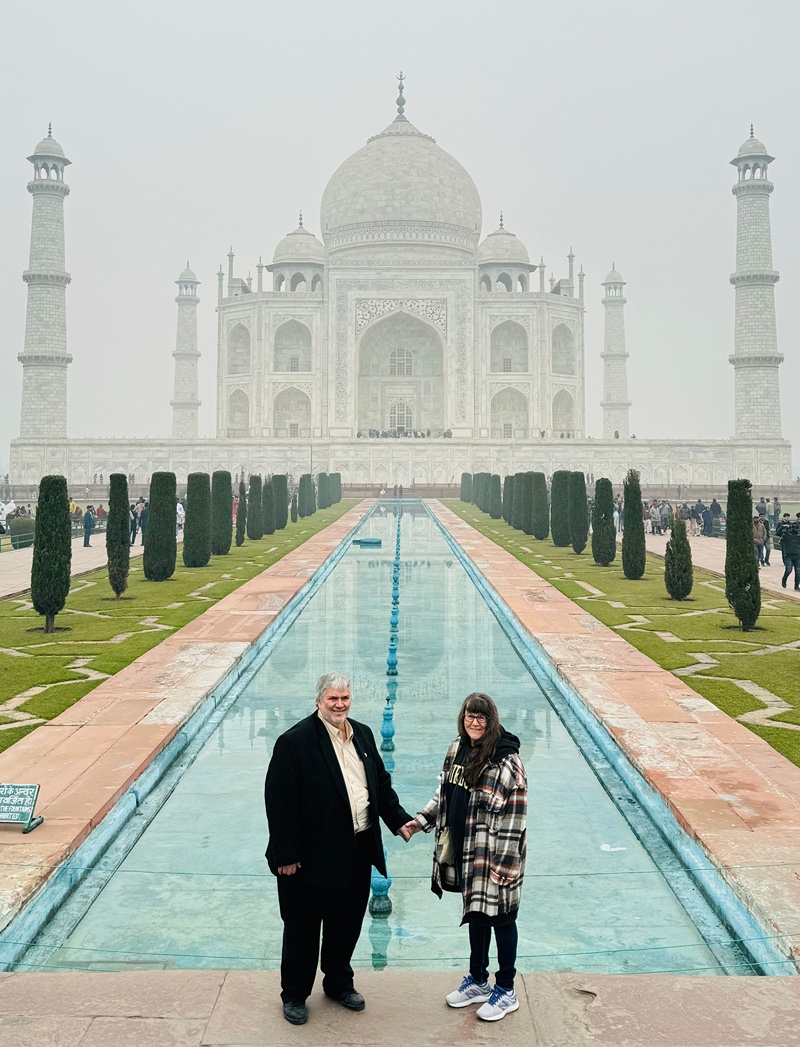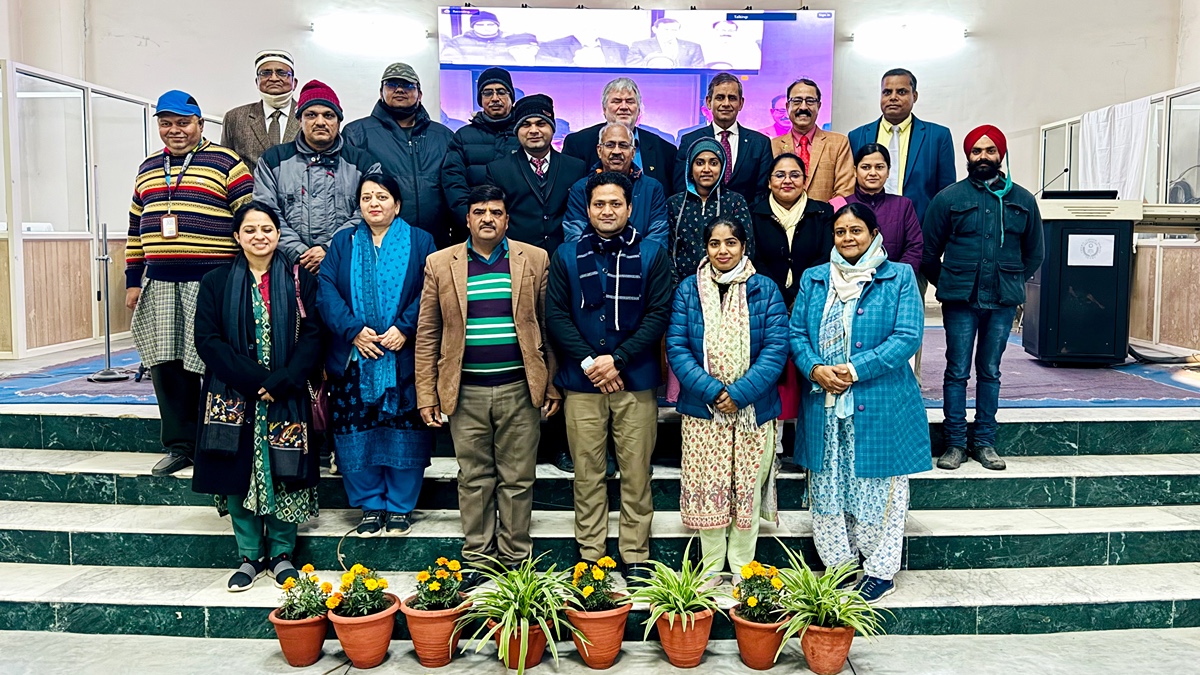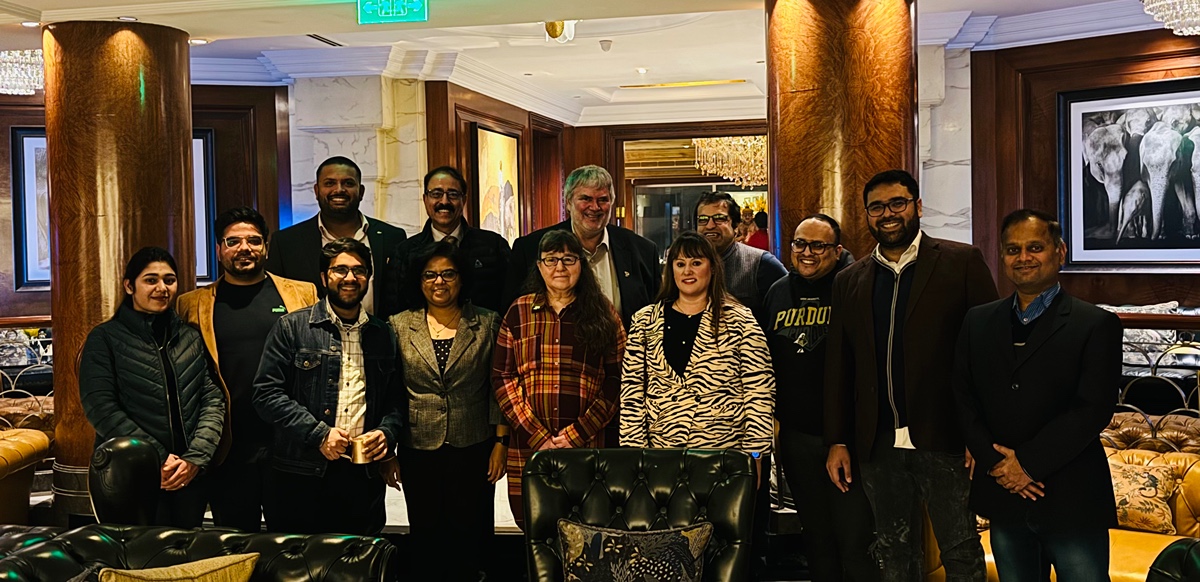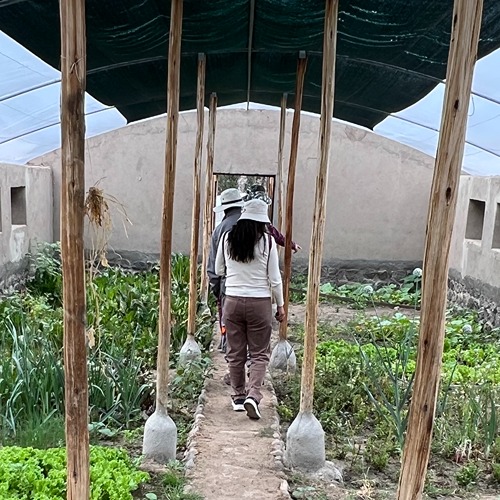Experiencing the wonders and possibilities of India
Bernie and Andrea Engel had plenty of dreams when they were growing up in their respective rural Illinois towns. But the Glenn W. Sample Dean of Agriculture, talks about one specific moment neither of them ever expected to experience. “Growing up you hear about the Taj Mahal, one of the Seven Wonders of the World. But we would never have imagined that one day we would be there. We were truly overwhelmed.”
The Engels left for their first trip to India on a snowy Chicago day in January landing in New Delhi anticipating summerlike weather. The weather was colder and wetter than they’d expected, with fog occasionally so thick they couldn’t see their hands in front of them. Still, Engel says the weather took a definite backseat to the experiences they had during their two-week trip.
Engel said he can’t imagine their trip without his Purdue Agricultural Biological Engineering colleague Dharmendra Saraswat, who is currently in India on a Fulbright Fellowship. Saraswat is working at his alma mater, the Indian Agricultural Research Institute (IARI) in New Delhi, collaborating with scientists at IARI’s Division of Agricultural Engineering and Agricultural Physics to help adapt spatial data science course and create workflow for an early warning rice disease forecasting system.
“Without Dharmendra, it would have been a very different trip,” Engel says. “He’s very well connected with key leadership, many of who are his former classmates. And he helped make the trip go as smoothly as possible while also being memorable.”
One of those memorable moments was when Saraswat took the Engels to the Ganges River at dusk. The Ganges River provides water to 40% of India’s population and is also a source of irrigation for a wide variety of crops. For centuries, ceremonies have been conducted at the river every day at dusk and dawn with prayers for the river to continue flowing.
Another moment was when the Engels had space in their schedule to drive to the foothills of the Himalayas. “The foothills were actually 6,000 feet high,” says Engel. The drive was on very narrow roads that winded around the mountain. Unnerving, but “totally worth it,” Engel says.
In the midst of experiencing India’s sights, culture and food (“almost all vegetarian with amazing Naan bread”), Dean Engel also represented Purdue Agriculture at the International Conference on Future of Water Resources at the Indian Institute of Technology (IIT) Roorkee. He delivered a lecture on “The Future of Modeling Water Resources,” chaired another session and offered greetings from Purdue in the conference’s plenary session. During the conference and later on at the Indian Institute of Technology New Delhi, Engel was especially pleased to see how the Soil and Water Assessment Tool (SWAT) model, developed by two of his former graduate students, is now the international standard in soil and water assessment.
Engel signed letters of intent for collaboration with IIT Roorkee and the Dayalbagh Educational Institute at Agra. Saraswat also arranged for Engel to meet with numerous other Indian academic and political leaders as well as a group of Delhi-based Purdue alumni.
"I wanted Dean Engel to get a feel of an aspirational and booming India with a warm tradition of welcoming guests,” says Saraswat.
Engel and Saraswat agree that there are numerous opportunities in India for building on existing relationships and forging new ones.
“The number of graduates from public and private sector universities in India is less than 100,000 per year. Policymakers recognize the need to train several times more students than at present, incorporate new pedagogical approaches, reform course curricula, and develop partnerships for preparing next-generation students to solve global challenges in agriculture. Through several new online programs, a strong focus on pedagogy, and a modern curriculum, Purdue's College of Agriculture can assist in fulfilling these needs,” explains Saraswat.
Engel returned from his trip with a belief that Purdue Agriculture’s further engagement with India will be meaningful to institutions and students in both countries, concluding, “This was a good first step to leverage opportunities across institutions and lay a strong foundation for a mutually beneficial relationship.”









